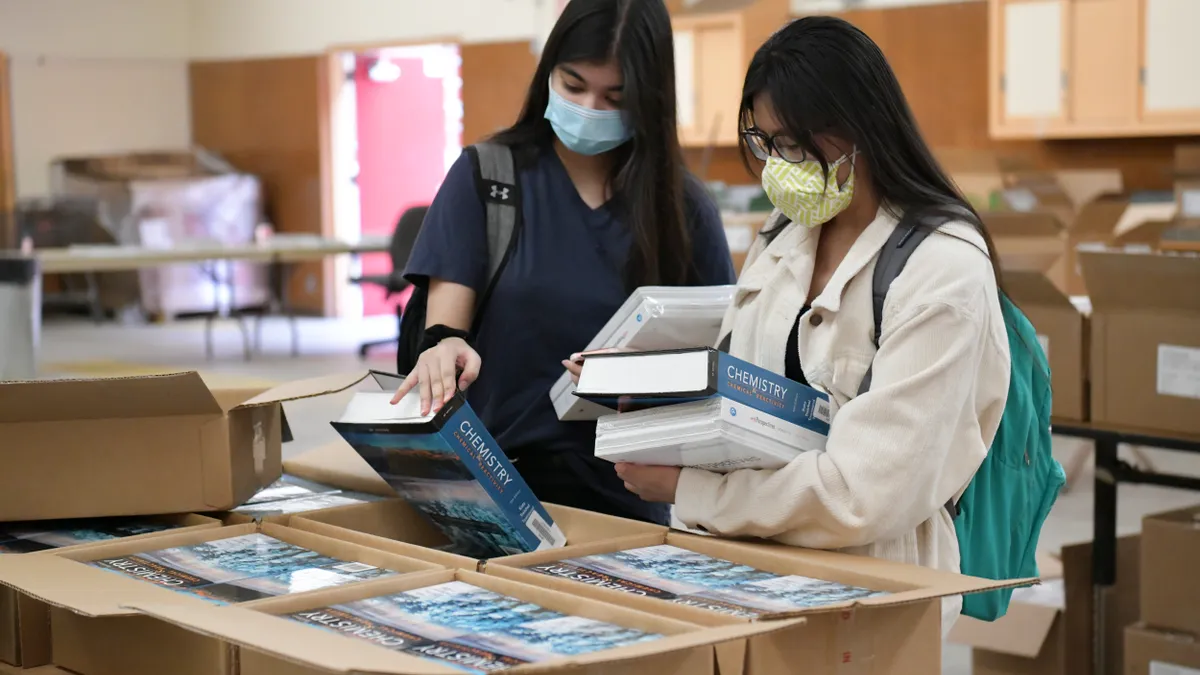Alyssa McKee is an English teacher in Frederick County Public Schools in Virginia.
We are wasting time — our time and our students’ time. We are running around a hamster wheel giving busy work and complaining when students don’t find it valuable enough to complete.
Why do students need to learn poetry in isolation? What about persuasive writing? Wouldn’t it make sense to write a passionate plea to save the ocean while including pertinent research about the chemicals involved in oil spills and cleanups?
We CAN pair subjects with other content areas to create more meaningful work for students. I speak not just idealistically, but with experience to back my opinion. In a pilot program currently done in a public school in northern Virginia, students are combining content areas and learning, internalizing and finding value in education.
Core subjects being paired together makes sense. When student choice is brought into the mix, students can make connections that we may never have even thought about incorporating into the classroom.
Many teachers are hesitant to this idea because they may wonder how to pair concepts from two subjects together when we, as teachers, are content specialists in only one of these areas. The answer is that we need to be able to have trust in our students to piece together what we perceive as “gaps” in this progress. The truth is that it is scary as a teacher to incorporate this kind of learning into the classroom, because we give up a certain level of control and the students become the experts.
The result of this concept is deeper learning, more motivation, and better relationships and communication skills among students.
Recently, in the program referenced above, students did cross-curricular work in science, math, social studies and English for an entire school year. The result was a group of deeply committed students doing work that honestly transcended my understanding of the other content areas.
The students created projects dealing with water pollution, alternate energy, the opioid crisis and alternative solutions to each area. Students incorporated calculus, geometry, half-lives, poetry and countless other concepts into their work. They completely achieved and transcended the curriculum.
I didn’t understand a lot of the content they were delving into in regards to the content areas that were not my area of expertise, and that was intimidating for me. But why should that limit their work?
This work also resulted in better time management and social-emotional learning among students. By working in a multi-content, varied age and level environment, real-life work environments are mirrored.
Students navigated how to communicate with one another, how to rely on each other’s strengths and support each other’s areas of need. Students held each other accountable, worked through hard conversations, learned about the learning styles of themselves and others, and developed time-management skills.
They learned from doing — and sometimes failing. Failure in areas such as time management provided lessons valuable to moving forward and trying something different.
Students come out of a more self-directed and cross-curricular learning environment ready to manage their time as adults. They are prepared for self-study skills if they pursue higher education, they are prepared to balance work and life, and they are prepared to work well with others in whatever environment they find themselves in.
The catch? We are limited in the scope of cross-curricular work in high school. We can’t do this unless the traditional high school schedule model is revamped.
Going from class to class when the bell rings doesn’t work. This kind of work doesn’t always fit nicely inside of 90-minute class periods. We can’t do this unless the traditional high school classroom arrangement is revamped.
Students sitting facing forward in desks while the teacher lectures for an hour doesn’t lend itself to a productive environment. Students in this type of work need to have freedom and flexibility to dive into their work. We can’t do this unless the traditional high school grading system is revamped. Grades don’t always reflect learning and growth.
No matter the limitations, we HAVE to find a way to make this cross-curricular learning more widespread among high schools in the United States. Students are worth it. Their education is worth it.







 Dive Awards
Dive Awards






